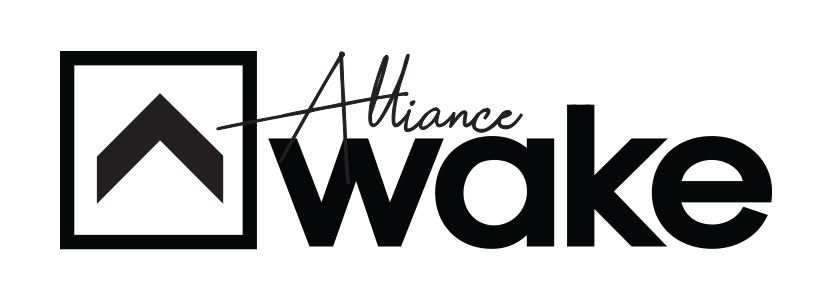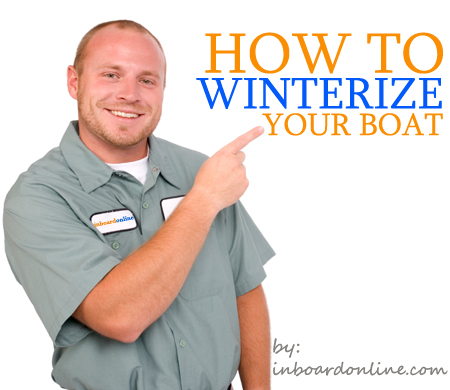HOW TO WINTERIZE YOUR INBOARD MARINE ENGINE FOR WINTER STORAGE
Natural Bridge, VA (October 7, 2011) ~ By carefully winterizing a boat’s drive system, you can save yourself thousands of dollars in repairs and the frustration of poor performance in the spring. Your Marine Parts and How to Source, www.inboardonline.com has outlined the crucial steps to winterizing your boat’s drive system so when warm weather arrives once again you will be out on the water in no time.
Without proper preparation, storage for long periods of time may cause internal parts of the engine and transmission to rust because of lack of lubrication. Or, if the boat is stored in below freezing temperatures, water in the engine may freeze and cause damage. Damage resulting from improper storage is not covered by the manufacturer’s limited warranty.
NOTE: This is a general procedure that covers winterization basics on several models of Indmar engines. Indmar assumes no responsibility for any damage that might occur from improper winterization of your engine. This procedure covers only the power package portion of your boat. Consult your boat owner’s manual or boat manufacturer for specific boat winterizing instructions. Please read the entire procedure before starting.
Before starting you will need the following supplies:
• Sta-bil Gasoline Stabilizer
• 6 quarts of Pennzoil 15W40 Marine Engine Oil
• Oil Filter
• Fuel Filter
• 4-6 ounces of light weight oil in a pump-type oil can. (SAE 10W or Marvel Mystery Oil or Fogging Oil)
• 1 can WD40 or other Anti-Corrosion Spray
• Transmission Oil (As Required)
o For In-Line and Hurth V-Drive transmissions use Pennzoil Dexron 3 ATF
o For Walters V-Drive use SAE 30W engine oil
• Sierra Brand Anti Freeze (as Required For Closed Cooling System Engines Only)
• Waterproof Marine Multipurpose Grease
• Short Piece of Stiff Wire (Coat hanger wire)
• Anti-Freeze Tester (Closed Cooling Engines Only)
• Pipe Thread Sealant
STEP 1
To do a complete winterization, you MUST be able to run the engine and bring it up to operating temperature. To do this, your boat must be in the water or be attached to a water supply via a hose and suitable adaptor that will allow an uninterrupted supply of water to the engine.
STEP 2
Fuel System Treatment
If the boat is to be placed in storage with fuel in the fuel tank(s) that does not contain alcohol: Fill the fuel tank(s) with fresh fuel that does not contain alcohol and a sufficient amount of Sta-Bil gasoline stabilizer to treat the entire tank. Follow the instructions on the container.
If the boat is to be placed in storage with fuel in the fuel tank(s) that does contain alcohol (if fuel without alcohol is not available): Fuel tank(s) should be drained as completely as possible and Sta-Bil gasoline stabilizer added to any fuel remaining in the tank. Follow the instructions on the container.
STEP 3
Replace the fuel filter.
Make sure the boat is in the water or an uninterrupted supply of water is supplied to the engine.
Start the engine and check the fuel filter for fuel leaks. If leaks are found, stop the engine immediately and repair them. Recheck filter installation.
Start the engine and operate it at Idle RPM until it reaches normal operating temperature. (If using a hose and adapter, open the faucet to approximately ½ flow to avoid over-cooling the engine at low RPM) Run the engine for at least 15 minutes to ensure that the fuel stabilizer enters the engine’s fuel system.
STEP 4
Change the oil and oil filter.
Loosen all accessory drive belts. Check their condition. Replace if cracked or damaged.
Remove the spark plugs and squirt one to two tablespoons of oil (SAE 10W or Marvel Mystery Oil or Fogging Oil) into each of the cylinders through the spark plug holes. Engage the starter to crank the engine over a revolution or two to distribute the oil on the cylinder walls. Replace the spark plugs.
STEP 5
Drain the seawater section of the cooling system.
All Engines
Remove both hoses from the Sea-water pump on the front of the engine. Drain the water from the hoses.
Remove the raw water pump impeller from the pump housing. Lubricate the impeller with Vaseline and store it in an air-tight bag. Replace the impeller if it shows signs of damage or wear.
Remove the hose from the lower (rear) end of the transmission cooler. Inspect the cooler for any debris like weeds, bits of plastic bag etc.
On Walters V-Drive equipped units, remove the two small square headed drain plugs from the front and rear of the upper housing. Look for the words “Water Drain” on the housing. We suggest putting the plugs in a plastic bag and attaching it to the steering wheel of the boat as a reminder for spring recomissioning.
On units equipped with the Ski-Vee V-drive transmission assembly, remove the drain plugs that are threaded into the heat exchanger at the rear of the V-drive. This will drain water from the heat exchanger and hoses.
Raw Water Cooled Engines
Drain the water from the exhaust manifolds. On older engines you have to remove the drain plugs from the rear of each manifold. On newer engines, a hose with a quick disconnect fitting connects the manifolds. Uncouple the hose and drain the manifolds. We suggest leaving the drain plugs out or the hose uncoupled till spring. Putting the drain plugs in a plastic bag and attaching it to the steering wheel of the boat acts as a good reminder when you re-commission the boat in the spring.
Remove the petcock or drain plug from each side of the engine. We suggest removing the petcocks completely, not just opening the petcock drain valve. Take a short piece of stiff wire and poke it around in the drain hole to ensure that any rust scale is broken up and the engine drains completely. Some engines have a knock sensor(s) located in the drain location. The knock sensor(s) must be carefully removed to drain the block. We suggest that you put the drain plugs in a plastic bag and attach it to the steering wheel of the boat to act as a reminder during re-commissioning in the spring.
Disconnect the large diameter hose that runs from the water circulating pump to the thermostat housing. Make sure all of the water drains from the hose.
Closed Cooled Engines
Remove the raw water inlet and outlet hoses from the seawater side of the heat exchanger.
Check the level of the coolant on the fresh water side of the heat exchanger. Also use the anti-freeze tester to test the strength of the mixture.
We recommend a 50:50 mix of Sierra Anti-Freeze and water, which gives protection down to minus 50 degrees F. If the coolant level is low, add a sufficient amount of coolant/water mix to fill the heat exchanger. When warm, the coolant level should be approximately ¾” below the filler neck.
If the coolant in the heat exchanger is not of sufficient strength, we suggest taking your boat to your dealer and having the coolant replaced. This is not an easy task and it is best done by a professional.
STEP 6
Drive Train Preparation
Change the transmission fluid in the Hurth In-Line or V-Drive Transmission following the instructions in your Hurth Transmissions Owner’s Manual. Add sufficient Pennzoil Dexron 3 automatic transmission fluid as required to bring the dipstick level between the full and add marks.
On Walter V-Drive units, change the oil in the V-Drive per the instructions in the Walter Owners Manual. Use SAE 30 Motor Oil and fill to the proper level.
Remove the attaching hardware from the propeller shaft coupling. Separate the flanges and coat the surfaces with Waterproof Marine Multipurpose grease.
STEP 7
General Power Package Preparation
Clean dirt, grime and grease from the painted surfaces of the engine and drive train.
Touch-up painted areas of the engine and transmission.
Lubricate throttle and shift linkages and cables with Waterproof Marine Grease.
Spray any unpainted parts with WD40 or other anti-corrosion lubricant.
Disconnect the battery cables from the battery and charge it fully. If you remove the battery from the boat, store it in a cool and dry place.
Leave the engine box cover propped open about 2” to help ventilate the engine compartment.
By following your manufacturer’s directions to winterizing your boat’s engine, you are ensuring the best possible performance from your boat’s propulsion system. Next, winterize the hull and interior of the boat so when spring arrives, you can be confident that the steps you took in the fall will mean less hassle before getting out on the water again in the spring.
WARNING
Because of the complexity of preparing your engine for winter storage, as well as the possibility of catastrophic engine damage from freezing water in the engine, we recommend that you have your dealer accomplish this task. Any damage caused by improper winterization/storage is not covered by the product warranty!
Inboard Online
Inboard Online is your marine parts and how to source. The website is devoted exclusively to inboard boaters and offers hard to find boat parts at the price you want to pay. Bargain hunters can browse thousand of quality parts with the brand names they seek. Inboard Online not only deliver’s you the best in boat parts, they are your how to source! From simple instruction to more advanced issues, Inboard Online has got you covered with many how to’s that will keep your engine running like new, more efficiently and most importantly for less money! For more information on inboard online, please visit www.inboardonline.com.




















July 12, 2016
Its really a good info about the effects of mercury as part by OK agencies, an largest Liquid Mercury Dealers in India